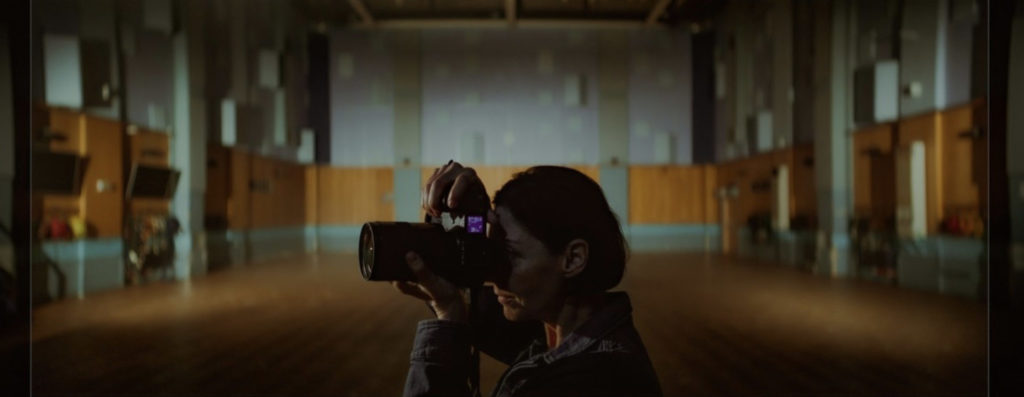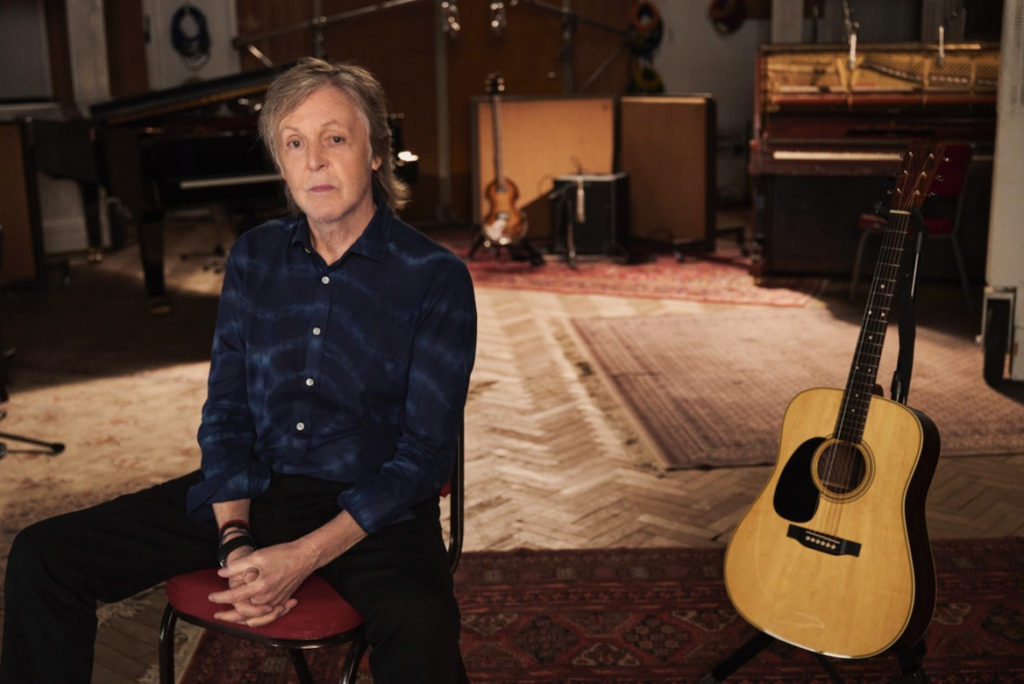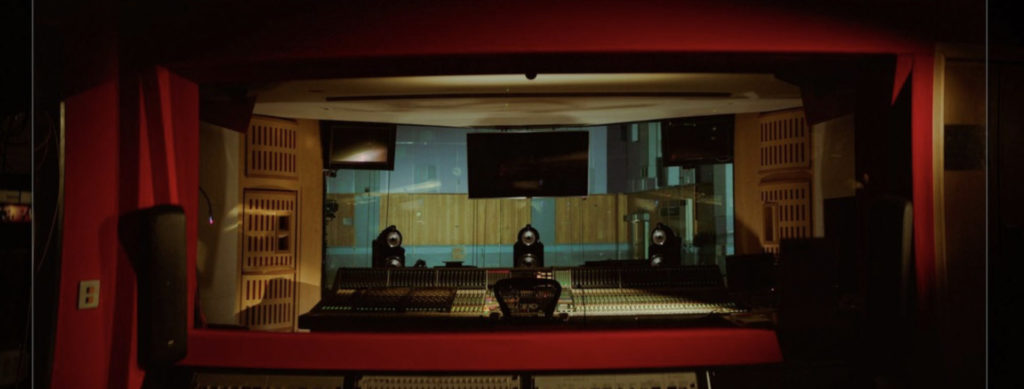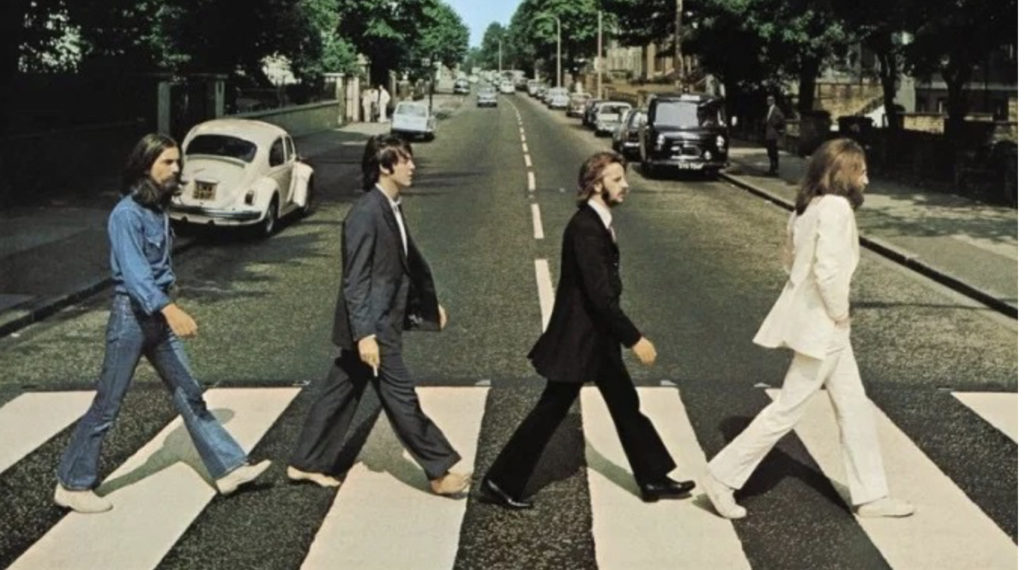
Synopsis : ‘If These Walls Could Sing’ will explore the legendary recording studio’s history in conjunction with Abbey Road’s 90th anniversary this November.

Q: You grew up watching Abbey Road Studios when you were kid, and you’re a daughter of Sir Paul Macartney. You have been working as a photographer and have also had cooking shows. Hoe did the project come about? Did you pitch the idea or did Disney approach you?
MM: No, it was amazing, actually, because it’s the first documentary I’ve directed. To have it going out on Disney as a platform for people to see is pretty incredible. But no, it wasn’t originally sold to Disney. But what happened was John Battsek, who is an Oscar-winning producer of documentaries — he did ” Searching for Sugar Man”, ” One Day in September”, he’s done thousands of documentaries — he approached me. He emailed me and said “Have you ever thought of directing a documentary?”
It’s a natural progression from photography to go into directing. I have directed short pieces, but not a feature length. I was like, “Yes. Yeah, I have been.” He had the Abbey Road documentary and he invited me to direct it. And then when it was announced, it was sold to Disney.
Q: This year marks the 90th anniversary of Abbey Road Studio. How did you narrow down all those archives and what would be essentials?
MM: It was absolutely a challenge, it was the real challenge. I went to the studio and we had pens and paper and wrote down all of the history from 1931 up to present day, and all the different artists that recorded there. And then it fell into different genres, like classical, the rock part, and then the movie soundtracks. So all kinds. I put everything out on the table and then I kind of jig sawed it together and it became the documentary.
I knew I wanted to do a classical section, and the classical section will pertain to Studio 1 because Studio 1 is the largest studio which has orchestral recordings. Then Studio 2, we can do the Beatles and Brit rock and throw those sections together.
I wanted the viewer to see the studios, so I wanted to film in the studios a lot and show the interior, but also show the different genres for uses within the space. Because it’s actually when you go there from the outside, it’s a residence, it’s a house — it started off as a house. Then what they did was the architects in the garden made these huge studios in the back. It’s quite surprising as you walk in to find how cavernous it is.
Q: Abbey Road Studio has three studios: Studio 1 seems focused on Classical music or movie soundtrack or orchestra recordings. Studio 2 was for rock music and Studio 3 is more innovative or foreign music. How did they divide them up?
MM: I hadn’t thought about it so much until I was doing the documentary, but there’s Studio 1, Studio 2 and Studio 3. Studio 1, there’s a vast, big space. It’s so big that when it wasn’t busy, they were like, “what are we going to do if it’s too big? We’ll make it into a car park or something” when it falls on hard times.
But it’s a big space and you can set it up with — the technicians will come in and put out all of the seats and everything for a whole full orchestra, like the London Philharmonic Orchestra. Studio 2 is a big space still, but it’s sectioned off into different areas so people are recording in different corners or when the wasters were there Abbey Road produced both the main, like, chill-out areas so people could hang out in one area and then record in another area.
And then Studio 3 is the smallest so it’s the most intimate, and it’s the one that’s been renovated the most. So that one has just gone for renovation — they update, they change the decor, they update the equipment in that one.
They’ve added a vocal booth where there was not a vocal booth before. Things like that.
So each studio is quite different. Each studio has its own character.
Q: When the Beatles came to Abbey Road Studio to record their music, “Please Please Me”, EMI label head George Martin suggested the Beatles play it faster. Some of the Beatles weren’t sure, but George said “This will be our first No.1 hit” and it did become No.1.
MM: They were in awe of the space and they hadn’t really recorded in the studios. Back then, as well, which was interesting, the musicians and the bands were not in the power position. The producers were in the power position.
So they went, and George Martin was producing them, and he was suggesting what they would do. He had the experience. They were an amazing live band but they weren’t amazing in the studio yet. They grew gradually. And then when recording [the] sessions, the reason they did that [first] album in one day is because the way recording worked, you arrive at 9 o’clock, you do a three-hour session, you came rehearsed, you record the song, you play it, you record it, they mix it, and that song’s done. You have a break. You do another song, that song’s done.
Then as the records started selling more, and they became more powerful, they went “Oh, maybe we want to do it later, we might come in a bit later, or we at least might not come in at nine o’clock or we might not finish at five o’clock.” The sessions got longer. And then they were experimenting in the studio — whereas before, you did not experiment in the studio. You arrived, you played, and you finished.

Q : I was really surprised that the Beatles made their first album in under 12 hours. But it’s obviously fab 4, it could make sense how talented they were.
MM: They all said that was recording, that’s what everybody did. Not everybody would do the whole album, but they would do that first album. It was like, song, song, break, song — the whole day. If you weren’t rehearsed and you arrived and you were not ready and rehearsed, you were in trouble.
Q: As much as it was devastating to the Beatles, it is important to Talk about Brian Epstein, who died at 32 years old. It had monumental changes in the Beatles. They lost their reference points. Your father, did he talk about any changes in the Beatles? They created Blackbird, their tone of music quite different.
MM: He spoke about it. I’ve asked him about it, and I ask him in the documentary. He talks about it in the documentary. He talks about it in the documentary. I was like, how did that affect you? Charles Martin talked about it a lot. He thought it was very important to give Brian Epstein his moment because he worked a lot with George Martin.
[Epstein]’s the one that brought the Beatles to Abbey Road. He brought Cilla Black. He did the Merseybeats, the Liverpool musicians, he brought a lot of them to London to Abbey Road. And he was an amazing manager. He really directed them, they trusted him. So when he died — there’s that amazing interview in the documentary.
You see John Lennon shocked, like what has he got that expression on his face, it’s they announced that Brian Epstein just died. It was such a shock, and they were mourning him so strongly. But then it was like, “we need to carry on”.
But they didn’t have — you know the term “rudderless”? They didn’t have the direction, they didn’t have that person there keeping them in check. So yeah, it changed. I think they really missed him.
Q: Elton John started out making a living as a session musician. Can you talk about that?
MM: It’s such a nice interview with him, isn’t it? He was like, “I was a songwriter. I didn’t really know I was ever going to become an artist like a performer.” He wasn’t “Elton John” then — he was Reginald Dwight, the session musician. He said that Abbey Road really taught him. He had to arrive, he had to remember “You’re playing on somebody else’s record. You just have to play and be good.” But then he — it was great hearing him talk about the fact that my dad had just wandered into the studio one day and was like, “Oh, do you want to hear this new song I’m working on?” and played “Let it Be” for them.
Q: Part of the reason why Abbey Road Studio is famous is because of the technicians. Sometimes the musicians challenged them: How about this? How about that? But talk about what’s amazed you about the musician and technician relationship during your research?
MM: Yeah. Well, the thing is, with Abbey Road the way it works is people arrive and they’re not experienced, they come and go, and they learn it’s a tech operation what they were. But that’s something that I learned through the research. But the people working now and the technicians were so critical, they’re so clever and they’re so professional, they’re talented.
But also, they are there to do everything for the artists to make sure there are no distractions and do anything to make sure the artists are in a position where they feel safe and inspired to create. And that really came out in my research for the documentary. I think that’s why so many artists were keen to be interviewed, because they wanted to say thank you in a way to the people that work at Abbey Road.
Because they’re some of the best in the world. They’re so experienced and clever. And they’re so good at what they do. And they have the ability to fix things, they have such knowledge. Everyone that works there really knows their stuff.

Q: One of the great things about Abbey Road Studio was also recording movie soundtracks including “Goldfinger”, and John Williams recorded “Raiders of the Lost Ark”, “Return of the Jedi”. They brought the projector to go along with the footage, and other income besides just the musicians. So can you talk about the business side?
MM: Yeah, it’s a studio that needs to make money. Originally it was part of the EMI group. Then other investors came in and it needed to be more of a functioning money-making studio. There were times when all the classical recordings had dried up and they were not being booked so much.
There were times when Studio 1 became empty for longer periods of time and it was like, “Okay, we’ve got to fill this space. We need to come up with something.” Because so many other recording studios were closing down all around the world. They were like, “We need to move with the times. What should we do?” And then it was like, “Well, maybe we’ll make Studio 1 into a car park, or into smaller studios.” So it was very fortuitous when the movie soundtrack contracts occurred because otherwise, who knows what would have happened to the studio? It was a real lifeline for Abbey Road.
Q: Compared to other musicians taking on a rock and roll lifestyle, your parents seemed very grounded. But was there a time when the fame of your father took a toll on you at times?
MM: I think he’s pretty good at pacing himself. .He has a very good routine, and he’s been doing this a long time. I think he has been overwhelmed, but I haven’t really seen it. It’s more like he has his way of doing things, and I think that’s part of his longevity. He takes care, he doesn’t get too wrapped up in things. He really holds on to his creative process. He remembers he’s an artist.
That’s probably why he doesn’t go “Oh, I need to see this meeting” and “I’m a big man I’m doing this” and “This is my schedule”. He’s kind of the way it is, things a little bit as artistically protecting his — something that I kind of think about “That’s good, that’s what I want to do more.”
Q: While making this film, is there anything that you didn’t know about your father that surprised you?
MM: Yeah, there was a lot. I didn’t realize a lot of the process. I loved the fact that I didn’t realize that at Abbey Road the instruments would be in the studio. Mrs. Mills’ piano, the one that’s on “Lady Madonna” — they didn’t say “This is the piano”, that wasn’t their piano. That was a piano that Mrs. Mills, a different musician, played. But it was in the corner of Studio 2. So they were like, “Let’s play it. Let’s put it on a record.” So I had not realized how Abbey Road and the things that are in Abbey Road made their way onto records, like the Beatles’ records.
Also Pink Floyd’s records — “Dark Side of the Moon”, some of the sound effects and things like that.. Abbey Road has the sound effects.
Q: Instead of the grand idea to go to Egypt, or a volcano in Hawaii for the album cover, they just crossed the street walking down Abbey Road itself. which became the iconic picture. Is it a concept of moving forward little by little?
MM: I know, and I think again, it shows their closeness to Abbey Road. Because they were spending so much time in the studio that they were like, “Let’s just go outside and step across. Keep it simple.” And then together — as long as they’re together.
Q: What do you want the audience to take away from this film?
MM: I want the audience to take away that they feel they have been invited into Abbey Road and that they get to know Abbey Road from watching the documentary. From seeing it, they can see what it looks like inside, but also from the interviews and from the footage, get to understand why people care about this studio so much and why it’s still an important studio today.
Q: Thank you.

Check out more of Nobuhiro’s articles.
Here’s the

